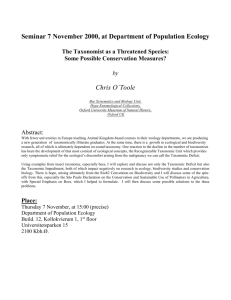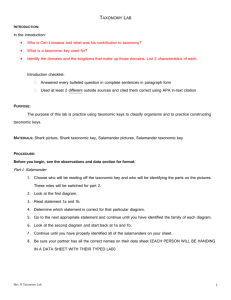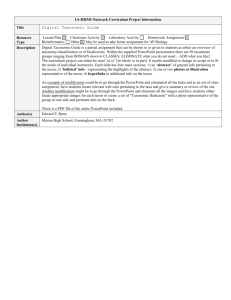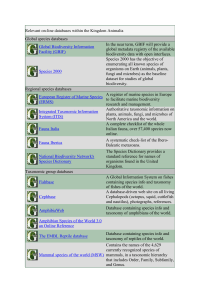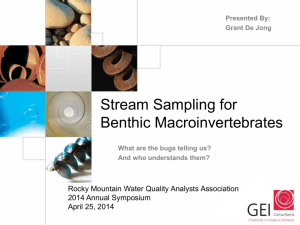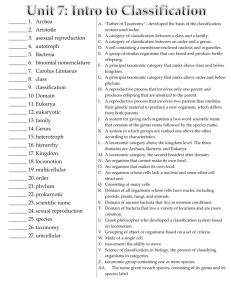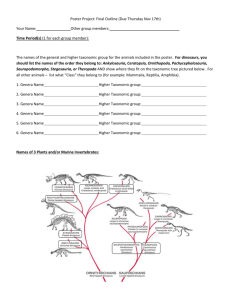How Many Species Are There on Earth and in the
advertisement
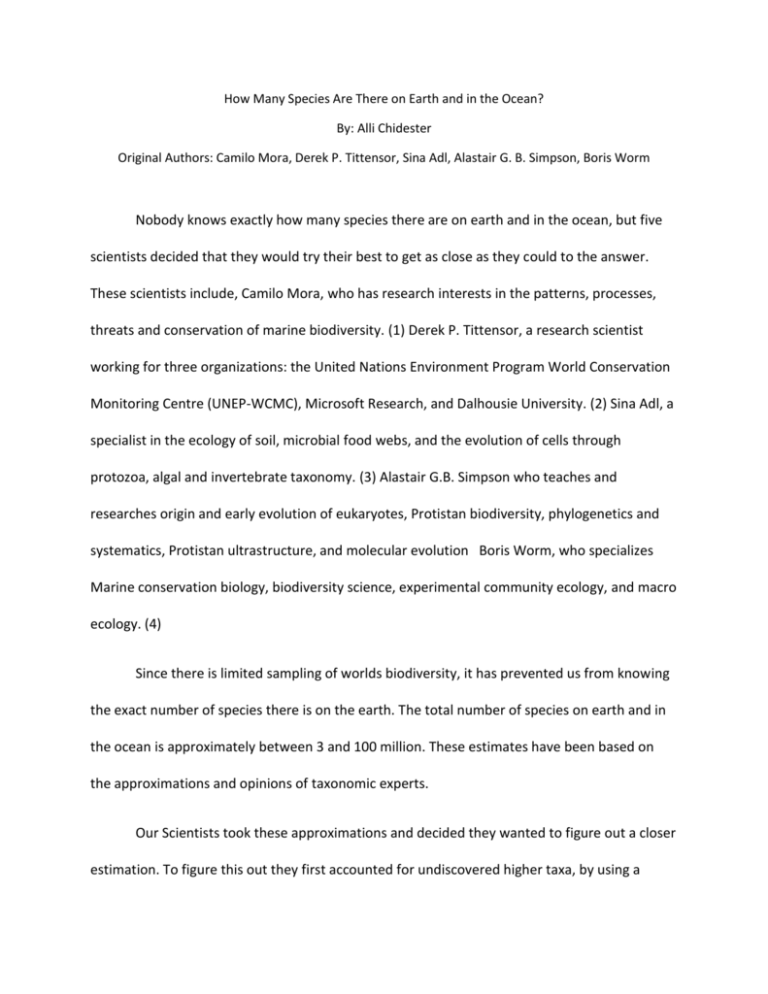
How Many Species Are There on Earth and in the Ocean? By: Alli Chidester Original Authors: Camilo Mora, Derek P. Tittensor, Sina Adl, Alastair G. B. Simpson, Boris Worm Nobody knows exactly how many species there are on earth and in the ocean, but five scientists decided that they would try their best to get as close as they could to the answer. These scientists include, Camilo Mora, who has research interests in the patterns, processes, threats and conservation of marine biodiversity. (1) Derek P. Tittensor, a research scientist working for three organizations: the United Nations Environment Program World Conservation Monitoring Centre (UNEP-WCMC), Microsoft Research, and Dalhousie University. (2) Sina Adl, a specialist in the ecology of soil, microbial food webs, and the evolution of cells through protozoa, algal and invertebrate taxonomy. (3) Alastair G.B. Simpson who teaches and researches origin and early evolution of eukaryotes, Protistan biodiversity, phylogenetics and systematics, Protistan ultrastructure, and molecular evolution Boris Worm, who specializes Marine conservation biology, biodiversity science, experimental community ecology, and macro ecology. (4) Since there is limited sampling of worlds biodiversity, it has prevented us from knowing the exact number of species there is on the earth. The total number of species on earth and in the ocean is approximately between 3 and 100 million. These estimates have been based on the approximations and opinions of taxonomic experts. Our Scientists took these approximations and decided they wanted to figure out a closer estimation. To figure this out they first accounted for undiscovered higher taxa, by using a multimodel averaging framework based on Alkaline’s Information Criterion. (5) (This I tried to research and could not find anything that could explain it in a way that I could not understand.) Second they took the predicted number of taxa for 18 different taxonomic groups and regressed them against numerical rank and models used to predict the number of species. This produced their prediction to ~7.77 million species of animals, ~298,000 species of plants, ~611,000 species of fungi, ~36,400 species of protozoa, and ~27,500 species of chromists. In result it predicted ~8.74 million species of eukaryotes on earth, and 2.21 million eukaryotes species in the oceans. (6) They also did a survey of 4,771 taxonomy experts. (9) While doing these tests, they had to keep in mind possible limitations that can influence the outcome. These Limitations include species definitions, changes in higher taxonomy, changes in taxonomic effort, completeness of taxonomic inventories, and subjectivity in the Linnaean system of classification. Species definitions mean that different taxonomic communities use different levels of differentiation to define a species. Changes in higher taxonomy are changes in the number of higher taxa that would affect the data used in their method and the results. Changes in taxonomic effort can be a strong determinant of species discovery rates. For completeness of higher taxonomic inventories they had to account for yet to be discovered higher taxa. And in subjectivity in the Linnaean system if classification, there are different ideas about the correct classification of species. (7) In Result, they estimate that instead of the suggested 3 to 100 million species, there are ~8.7 million species. Closing the gap will take a lot longer, having to use approximately 303,000 taxonomists and approximately $364 billion US dollars, and with extinction rates and the slow advance in the description of species, it will lead to species becoming extinct before anyone knows they even exist. So for now their estimations are going to have to be good enough for us. (8) Referenes (1) Future of Marine Animal Populations- ://www.fmap.ca/people.php?pid=53 (2) Department of Biology, Dalhouse University- http://www.mathstat.dal.ca/~derekt/ (3) Experts@dal, Dalhouse University- http://experts.dal.ca/expert/sina-adl-43 (4) Department of Biology, Dalhouse Universityhttp://biology.dal.ca/People/faculty/simpson/simpson.htm (5) Introduction (6) Results (7) Assessment of Possible Limitations (8) Discussion (9) Materials and Methods
